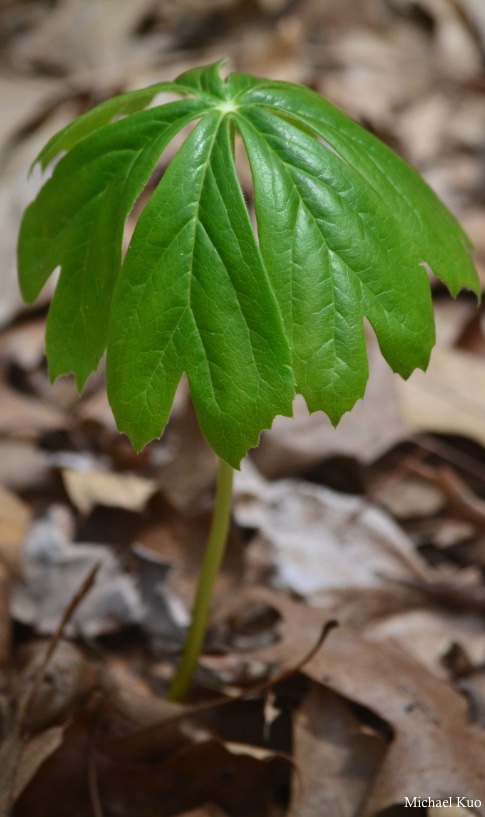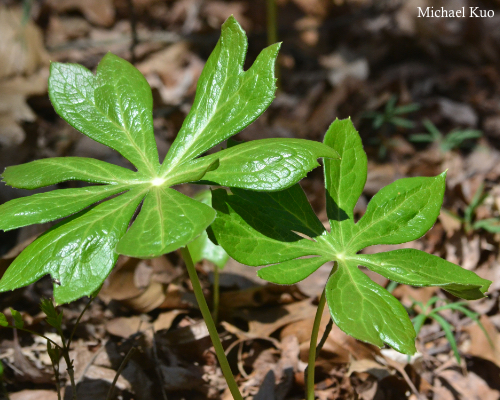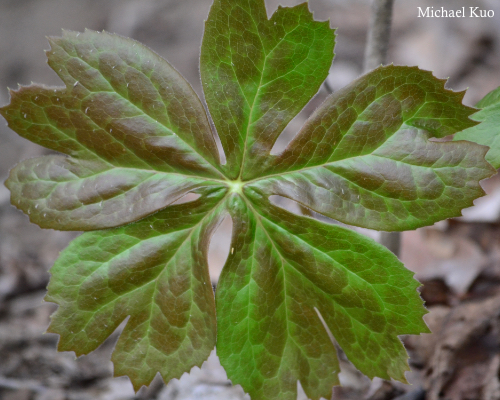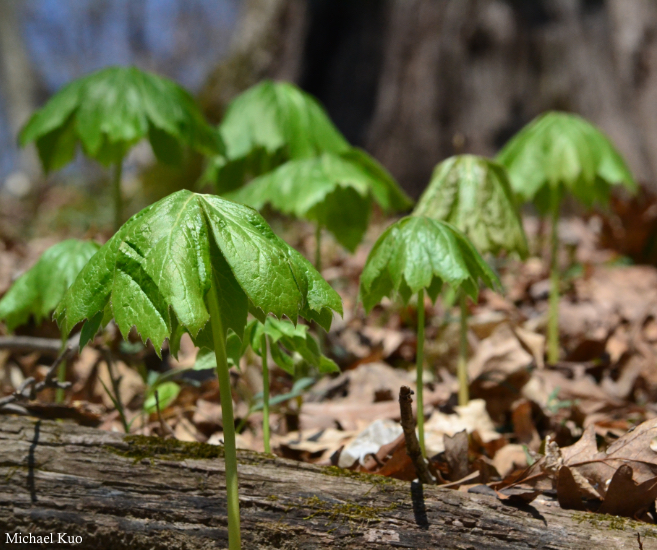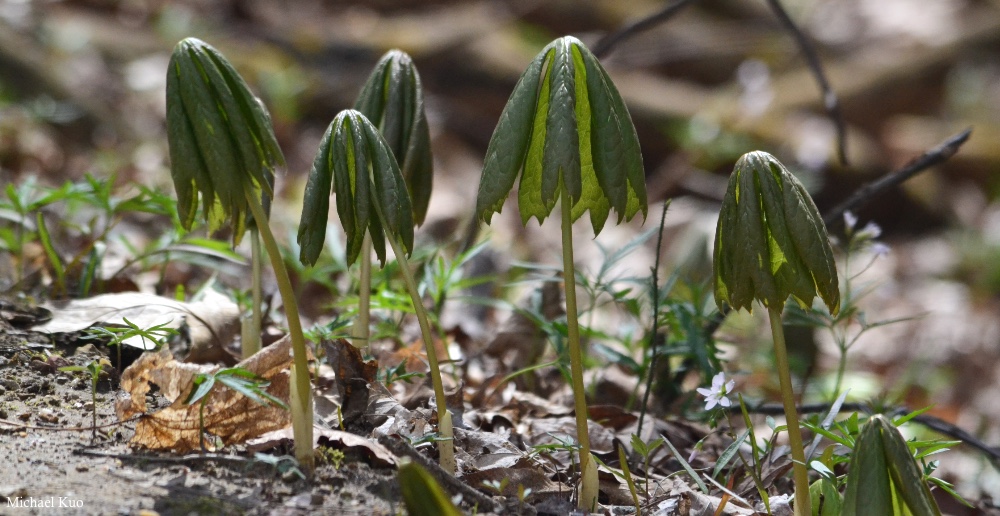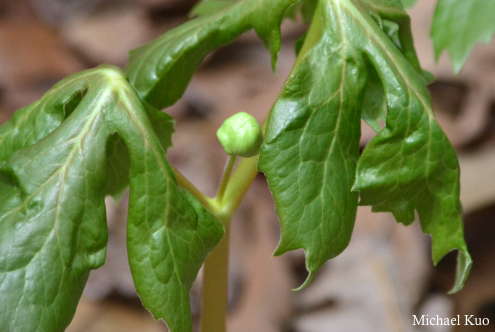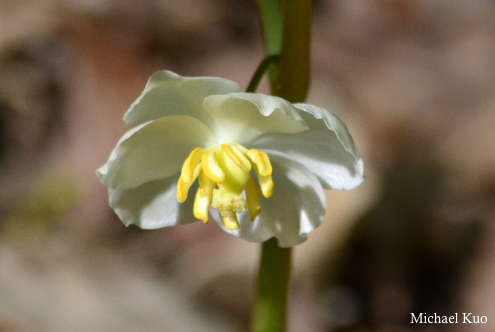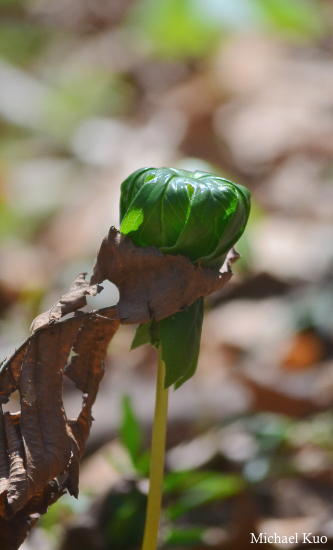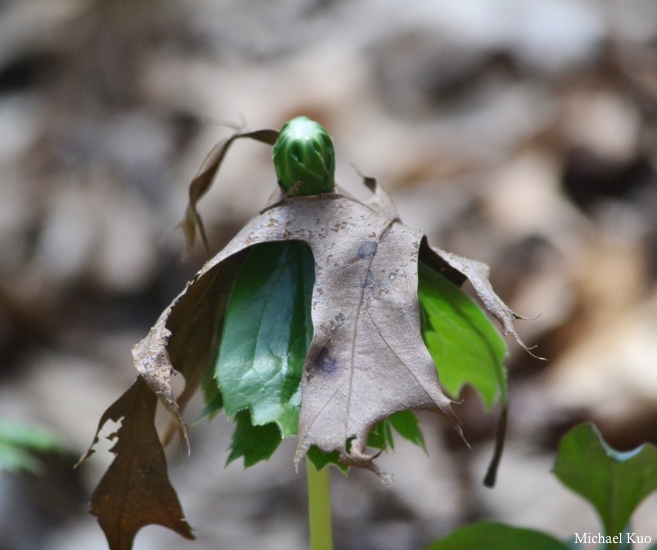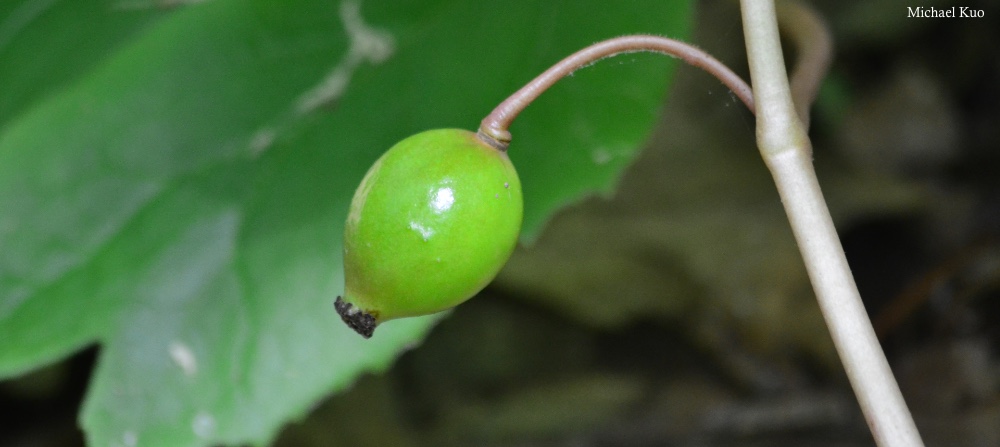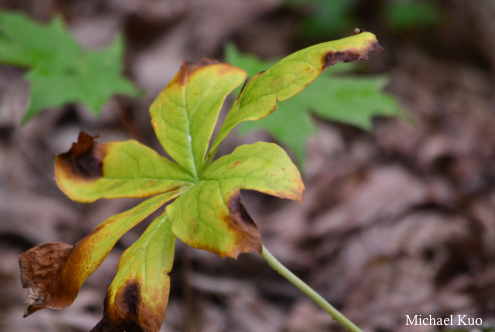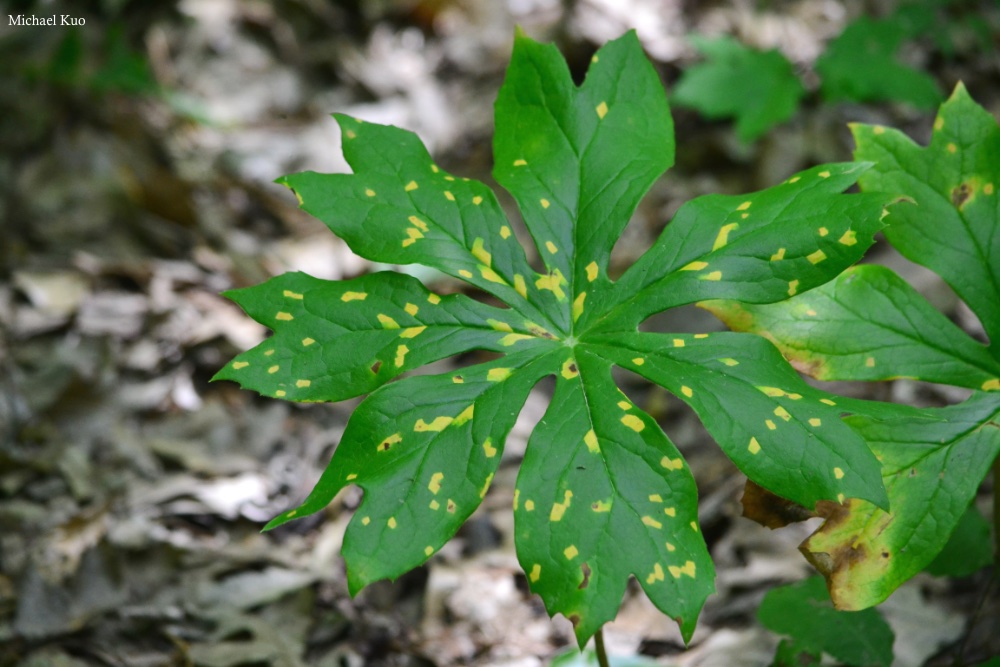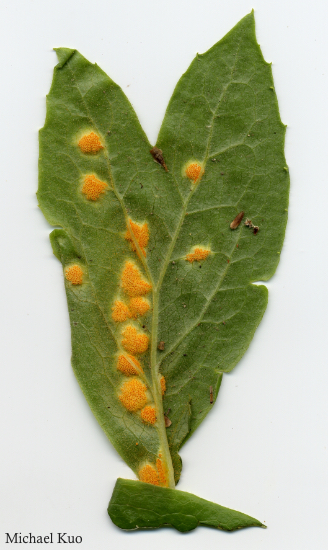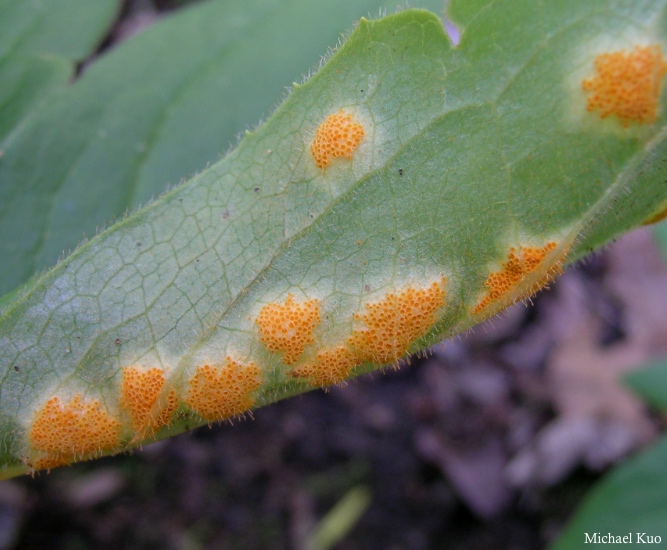 Podophyllum peltatum (mayapple) |
 |
|
Across much of the Midwest, mayapples are among the best-known plants of spring, appearing in April and May in hardwood forests alongside spring beauties, Jack-in-the-pulpit, and elusive morel mushrooms. Children who spend time in the spring woods quickly learn to recognize the umbrella-like plant ("maya appaw" was one of the first things our son learned to say), with its broad, floppy, lobed leaves and its surprising hidden flower, which is eventually replaced, usually in May, by the "apple" itself. Not all mayapple plants produce the flower; both fertile and infertile plants are common. The infertile plants have leaves divided into more lobes (generally 6–9) than those of the fertile plants (5–6). Flowers develop on fertile plants, right where the leafstems meet. The flowers have broad white petals and dull yellow centers. All parts of the mayapple plant are toxic except the mature "apple," which is either edible or only mildly toxic, according to our sources; we don't recommend eating any part of the plant. |
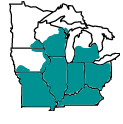 midwestern range |
|
|
|
|
|
|
|
|
|
|
|
|
|
|
|
|
|
|
|
Allodus podophylli (mayapple rust) Mayapple rust, Allodus podophylli, often appears on mayapple leaves in late spring or early summer. Look for yellow spots about 0.5–1 cm across on the upper surface of the leaves. Close inspection of the leaf's underside, beneath the yellow spots, will reveal orange patches filled with tiny round pustules. Unlike many rusts, which bounce around between hosts, Allodus podophylli spends its entire life cycle on mayapples. The fungus is traditionally known as "Puccinia podophylli," but DNA research (Minnis et al. 2012) indicates it does not actually belong in the genus Puccinia. |
|
|
|
|
|
|
References: GN Jones 1971, Kricher & Morrison 1988, RL Jones 2005, Minnis et al. 2012, Voss & Reznicek 2012, Kurz 2014, Mohlenbrock 2014, Hilty 2018, USDA 2018. Kuo, Michael & Melissa Kuo (May, 2018). Podophyllum peltatum (mayapple). Retrieved from the midwestnaturalist.com website: www.midwestnaturalist.com/podophyllum_peltatum.html All text and images © , midwestnaturalist.com. |
